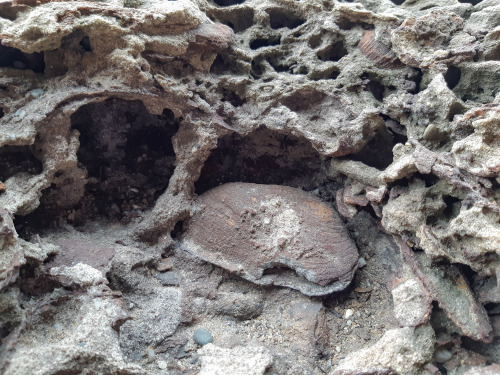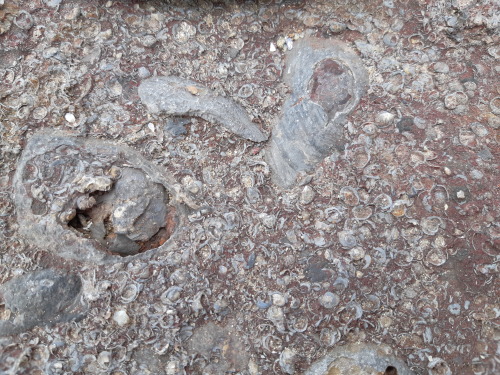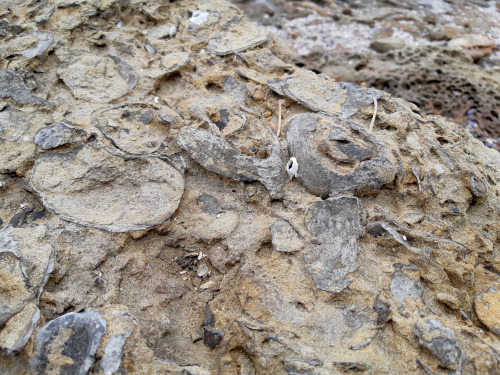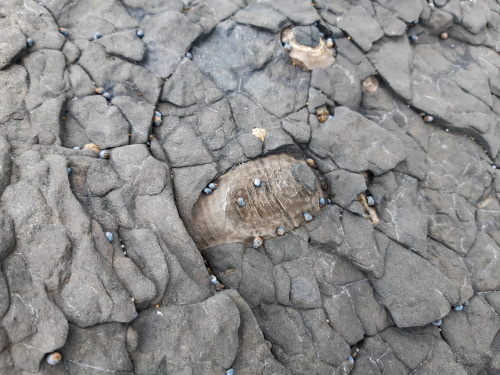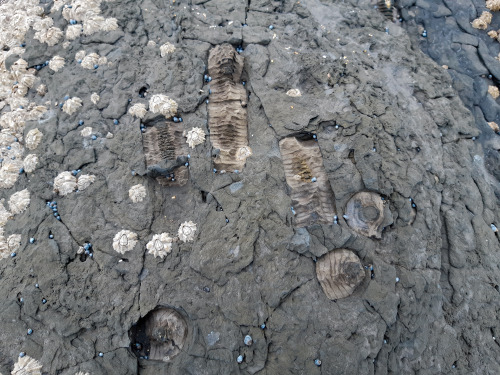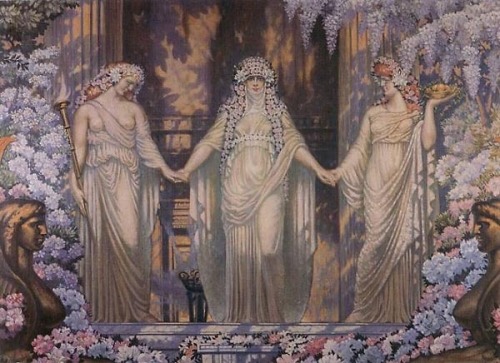#ancient life
Feeding patterns
These swirly patterns were made by living organisms at the bottom of the sea approximately 250 million years ago while they were feeding on an organic matter mixed within the sediment. The pictured sediments were buried by more sediments, hardened and eventually brought to the surface by tectonic processes without messing up such signs of ancient life.
South coast NSW, Australia
Post link
Broken shells
As you would find some broken-up shells on the beach today, these are just a few pieces of ancient sea shells from about 300 to 250 million years ago, preserved in the rocks which used to be a sea bottom sediment.
Ulladulla, Australia
Post link
Ichnofossilsortrace fossils, are marks left in the sedimentary record by living organism but are not a body part of the organism. For example, pictured are burrows left by an organism that was feeding on an organic matter in the sediment. These provide an evidence of ancient organism activity after sediment deposition but before it turned into hard rock.
Ulladulla, Australia
Post link
Do not be fooled by this incredibly well preserved shell, it is not a recent shell, but a 250 million year old fossil.
Many different mollusc fossils are very well preserved at this outcrop which consists of layer upon layer of sediment which slowly accumulated on the sea floor during Permian times. Organisms such as this one, would have thrived here, feeding on the organic matter settling down to the bottom of the sea.
Southcoast NSW, Australia
Post link
Giants among the Lilliputians, some diversity in size of bivalves among the sea bottom dwellers from Permian times (~250 million years ago).
Example from south coast NSW, Australia.
Post link
Ancient sea bottom exposed along a modern seaside rocky platform. This immense amount of fossilized shells is preserved in ~250 million year old sea sediments which would have been a feeding grounds for all these bivalves.
South coast, NSW, Australia.
Post link
Fossilized bivalve shells buried in an ancient sea sediments are receiving daylight for the first time in ~250 million years. These sediments are rich in iron minerals, which has replaced the carbonate shell material and preserved the original texture of the shell. Thank you iron oxides for preserving the growth layering of this shell for us to admire.
Beach-side outcrop in southeastern Australia.
Post link
Underwater Lilies
These barrel-shaped pieces are fragmented crinoid stems. This type of crinoid was a underwater lily-like creature which fed on the organic matter suspended in the water. Unfortunately, only stems were preserved at this outcrop, other elements were not found.
South Coast, NSW, Australia.
Post link
Scene from an ancient sea floor, as if it happened yesterday, however, these are from Permian period (~299–251 million years ago). Some of these fossilized bivalve shells are still articulated, meaning, left and right shells are still closed together. This tells you that particular animal specimen was undisturbed since its death, until now. The hard rock that envelops these shells was once a soft sediment in which these molluscs lived.
South coast NSW, Australia
Post link
Surface smoothed by grinding practice by people that once occupied caverns around the Uluru.
Post link
Proclus, the neoplatonic philosopher, although subsequent and therefore not present in the Eleusinian Mysteries, mentions that the officiator of the mysteries used the invocation cry “Ύε κύε!” to gather the protection and power of both the heavens and earth, or else of both the male and female aspects of divinity.“Ύε” may possibly be translated as “You may rain” and “κύε” as “You may incubate”, a ritual reminding us the sexual intercourse and also the fourth stage of the seven operations of alchemy, Conjunction. Mentally this state of being is close to what is called the true self, the union of the male and female sides of our personalities into a more intuitive yet authentic state of consciousness.
Post link




